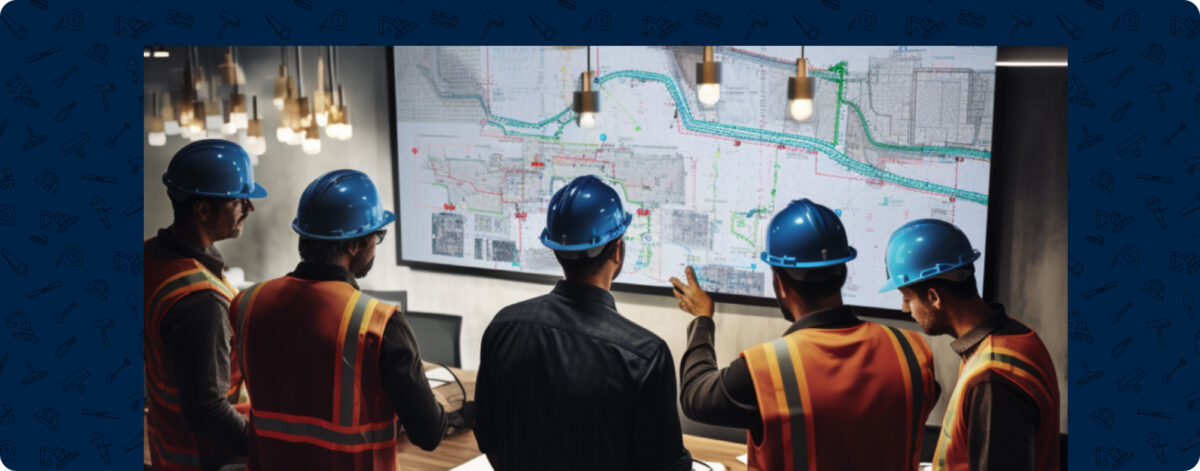What you need to know about construction tech and software
The construction industry is slow to adopt tech. Typically, running a few decades behind the tech innovation curve. Getting everyone up to speed takes time.
Tech and software have fundamentally transformed various sectors, and construction is no different. Given the overwhelming array of options, contractors often find themselves at a crossroads, unsure of what technology to adopt and how to implement it seamlessly.
Asking questions like, “Which software is the best fit for us?” Or, “We invested in software, but why didn’t it deliver?” is common. While it’d be convenient to offer a universal answer, the reality is the construction industry – with its diverse requirements and nuances – doesn’t lend itself to a one-size-fits-all solution.
Rather, we’ll need to learn how to approach this evolution as technology buyers, implementers and champions. Because it’s just that: the next evolution of our sector. Simply put, those who hide, deny or ignore this will go the way of the Dodo bird.
This isn’t to call anyone out, it’s just a statement of where we’re at. It’s why so many contractors still use white boards and spreadsheets for Workforce Management. Before you even consider signing a contract for a tech product though, your company’s culture has to be ready for change. Otherwise, you’re setting yourself up for failure.
Here are four steps you need to take to build a tech-friendly culture from top to bottom, courtesy of Classic Electric & Consulting Corp’s Toby Mitchell.
1. Create a tech-friendly culture
If you lack a tech-friendly culture, make fixing that your first step. Ideally, start this transformation now and allow yourself six months to a year – or longer – before making a decision. Engage your field force. Start with the challenge your team faces, understand their pain points, ask what could be better and involve them in the solution.
Kick off communications with your team by discussing the problems you’re facing and the goals you aim to achieve. This sets the stage for the innovation everyone is about to experience. This inclusion not only fosters buy-in, but might even reveal unexpected challenges. Maybe even uncover new or “sad-but-true” workflows. It mentally prepares the team for significant changes, establishes trust and the reason for the coming change.
It empowers your team to focus on what it does best: building projects.
2. Management’s role
Your executive team shouldn’t perceive this as a cost or job-cutting tool. Nor can they dump the initiative off on a mid-level manager or individual contributor. Yes, even if that person is “great with computers.”
We’ll delve more into management’s perceptions later, but it’s essential to recognize that the field workers – the heart of our specialty/self-performing businesses – often harbor fears: over-complication, failure, appearing ignorant, job cuts and exposing weakness. Fear they’re the final decision maker and that any failure could be perceived as their fault.
When we step back and look at it from this perspective, it’s ridiculous that we catch ourselves asking a key team member or employee, “Do you think we should do this?” In other words, “Would you stake your reputation or job on this succeeding?”
Of course not! We put them in a position they cannot win: Do it the same old way we know gets us by, or try something new and unknown. It’s our job as leaders to look for new approaches, spur the business toward them and accept the risks inherent to finding a better way forward.
3. Address resistance and fears
Most of these fears share a common thread and can be addressed collectively. By fostering a strong culture where learning and potential mishaps are part of the process and are embraced rather than shunned, we can alleviate much of this anxiety. A robust culture pulsing with positivity and enthusiasm about outcomes is a must.
Clearly painting the picture to our various teams of why we’re seeking new outcomes is too. It empowers those on the front line to talk openly and maybe even discover improved methods of how to reach the common goal. [Ed. note: check out Start with Why by Simon Sinek for more.]
When I was in high school, computer-aided design (CAD) was the new kid on the block. There was a widespread fear among architects, engineers and designers that their roles would become obsolete. The thinking went something like this: _Why would we need these professionals if a few mouse clicks could do a week’s work faster than humans with T-squares and freshly sharpened lead-holders?

Fast forward 30 years and not only do we still need architects and draftsmen, but CAD has paved the way for BIM and advanced 3D modeling, creating a whole new industry and job sector in the process.
We can’t discount this kind of apprehension, though. Especially when the job market gets tight. Layoffs might be a line item decision made in some air-conditioned boardroom, but it’s the field leaders, project managers and superintendents who have to deliver the tough news to their teams.
That’s why it’s crucial to foster a work culture that assures the team that embracing technology will mean more projects, greater visibility ahead, safer sites and fewer headaches – not less job security.
Massive gains on the front lines of the field can come from technological advances. That will only happen if we listen to their concerns to find a common goal.
We can’t use tech as a stick to beat them with.
Part two of Toby’s conversation about tech adoption on the Construction is Hard podcast
4. Embrace technology across ages
What about the field workers deemed “too old to learn?” If they can text, use a smartphone, Google or configure their fish-finders they can handle any construction software. They might be afraid you’ll ask them to code or perform something highly technical, but they’ve likely already realized that technology is an inevitable part of life.
By fostering a culture that instills confidence, we can help them see that they already know how using these tools can enhance their work. In the end, tech should make their life easier and the team more successful.
Change is hard but necessary. It’s what comes after that makes it all worthwhile.
Read more of Toby’s article on tech adoption here.

